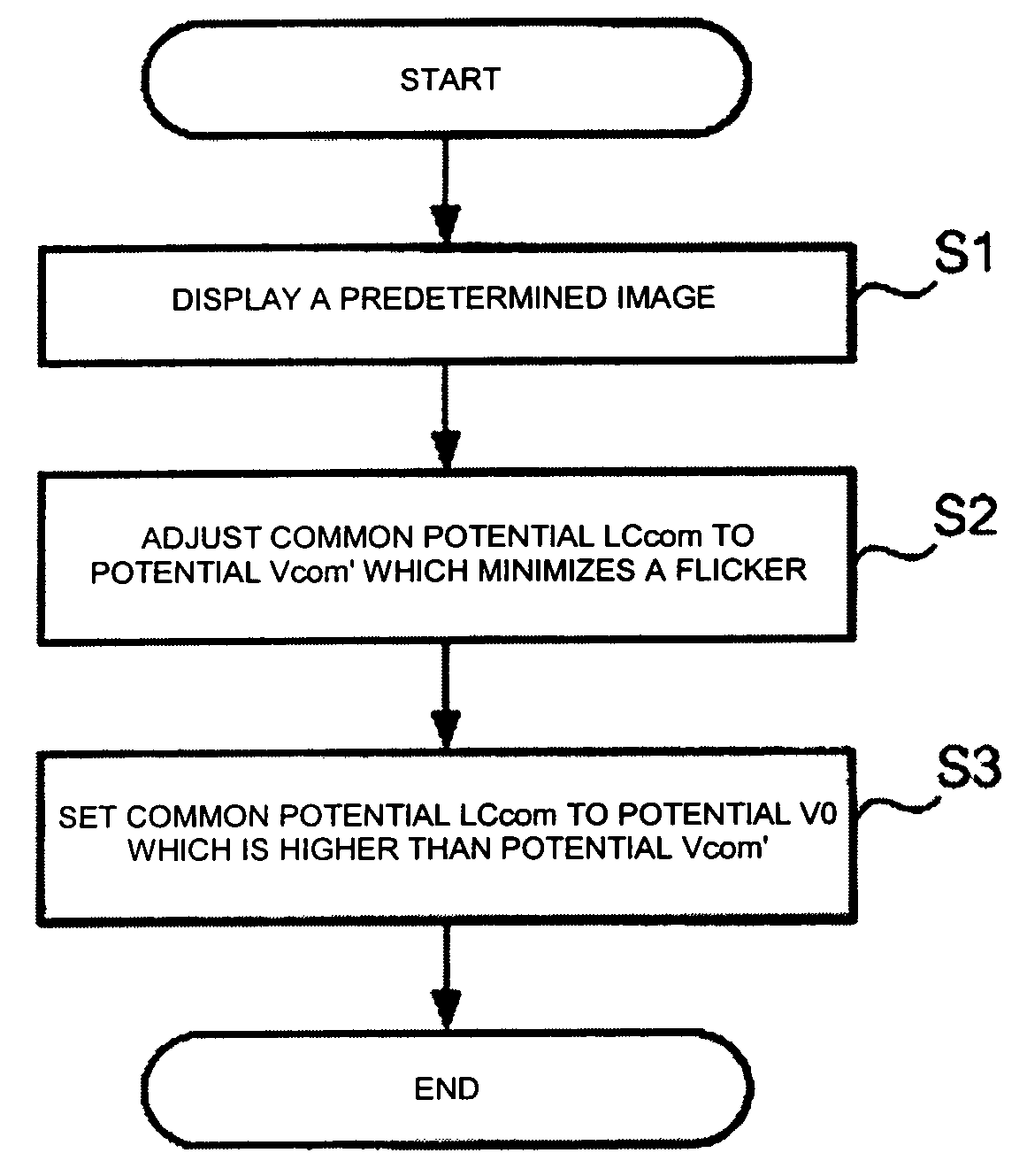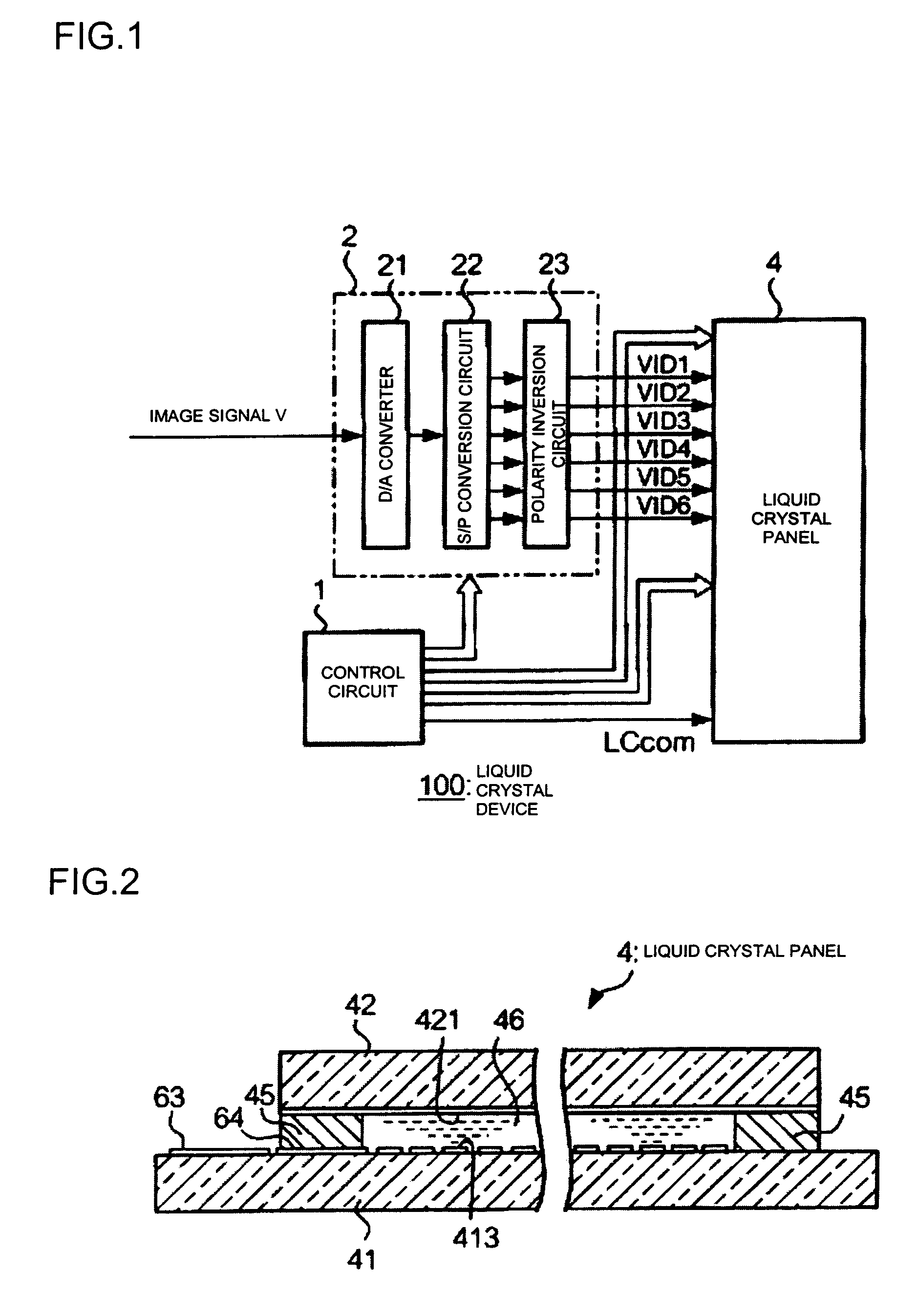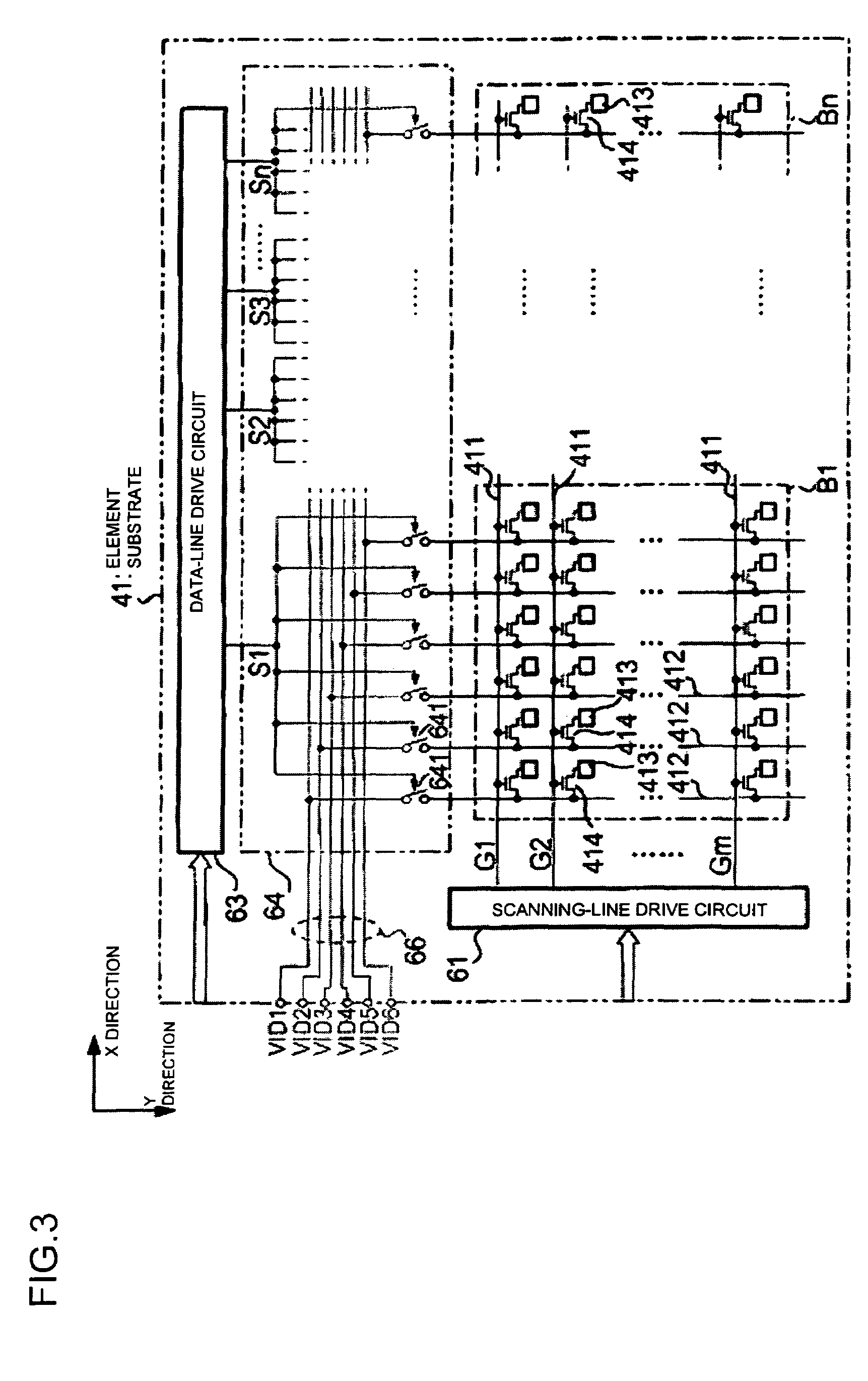Method for adjusting electro-optical apparatus, adjusting apparatus of electro-optical apparatus, and electronic system
a technology of electrooptical apparatus and adjusting apparatus, which is applied in the field of electrooptical apparatus adjusting apparatus, electronic system, etc., can solve problems such as deterioration of liquid crystal characteristics, and achieve the effect of suppressing flicker and reducing the variation amount of light emitted
- Summary
- Abstract
- Description
- Claims
- Application Information
AI Technical Summary
Benefits of technology
Problems solved by technology
Method used
Image
Examples
Embodiment Construction
A: Configuration of Liquid Crystal Device
[0027]First, a description will be given of an exemplary embodiment of an electro-optical apparatus whose common potential is adjusted by the method according to an exemplary aspect of the present invention. This electro-optical apparatus is a liquid crystal device which adopts a liquid crystal as an electro-optical material. As shown in FIG. 1, a liquid crystal device 100 has a control circuit 1, an image signal processing circuit 2, and a liquid crystal panel 4. Among these, the control circuit 1 is a circuit to control each part of the liquid crystal device 100 based on the control signals supplied from various upper units, such as a CPU (Central Processing Unit) of an electronic system in which the liquid crystal device 100 is mounted.
[0028]The image signal processing circuit 2 is a circuit to process a digital image signal V supplied from an upper unit to output a signal suited to be supplied to the liquid crystal panel 4. The image sign...
PUM
| Property | Measurement | Unit |
|---|---|---|
| frequency | aaaaa | aaaaa |
| frequency | aaaaa | aaaaa |
| electro-optical | aaaaa | aaaaa |
Abstract
Description
Claims
Application Information
 Login to View More
Login to View More - R&D
- Intellectual Property
- Life Sciences
- Materials
- Tech Scout
- Unparalleled Data Quality
- Higher Quality Content
- 60% Fewer Hallucinations
Browse by: Latest US Patents, China's latest patents, Technical Efficacy Thesaurus, Application Domain, Technology Topic, Popular Technical Reports.
© 2025 PatSnap. All rights reserved.Legal|Privacy policy|Modern Slavery Act Transparency Statement|Sitemap|About US| Contact US: help@patsnap.com



